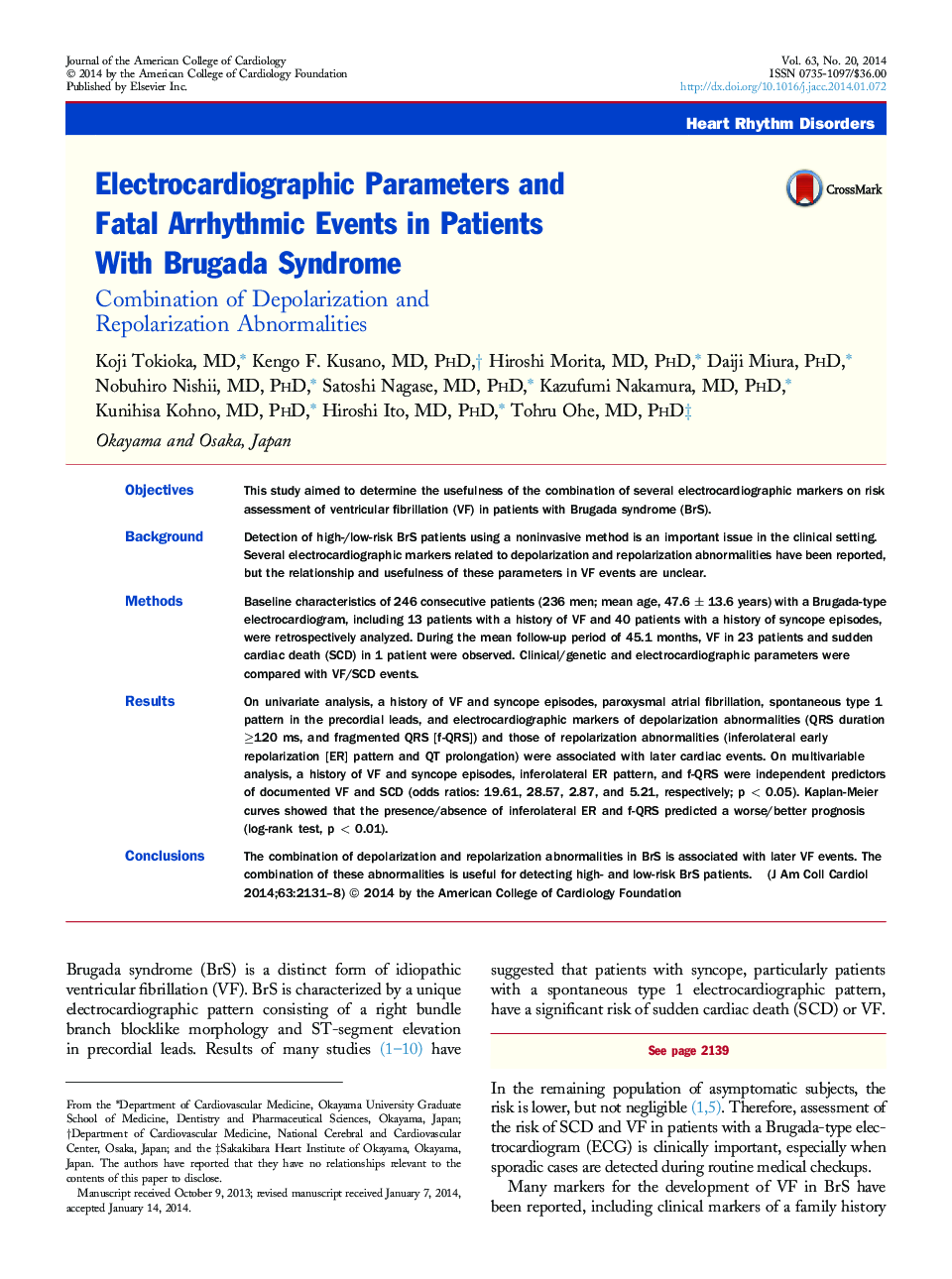| Article ID | Journal | Published Year | Pages | File Type |
|---|---|---|---|---|
| 5983120 | Journal of the American College of Cardiology | 2014 | 8 Pages |
ObjectivesThis study aimed to determine the usefulness of the combination of several electrocardiographic markers on risk assessment of ventricular fibrillation (VF) in patients with Brugada syndrome (BrS).BackgroundDetection of high-/low-risk BrS patients using a noninvasive method is an important issue in the clinical setting. Several electrocardiographic markers related to depolarization and repolarization abnormalities have been reported, but the relationship and usefulness of these parameters in VF events are unclear.MethodsBaseline characteristics of 246 consecutive patients (236 men; mean age, 47.6 ± 13.6 years) with a Brugada-type electrocardiogram, including 13 patients with a history of VF and 40 patients with a history of syncope episodes, were retrospectively analyzed. During the mean follow-up period of 45.1 months, VF in 23 patients and sudden cardiac death (SCD) in 1 patient were observed. Clinical/genetic and electrocardiographic parameters were compared with VF/SCD events.ResultsOn univariate analysis, a history of VF and syncope episodes, paroxysmal atrial fibrillation, spontaneous type 1 pattern in the precordial leads, and electrocardiographic markers of depolarization abnormalities (QRS duration â¥120 ms, and fragmented QRS [f-QRS]) and those of repolarization abnormalities (inferolateral early repolarization [ER] pattern and QT prolongation) were associated with later cardiac events. On multivariable analysis, a history of VF and syncope episodes, inferolateral ER pattern, and f-QRS were independent predictors of documented VF and SCD (odds ratios: 19.61, 28.57, 2.87, and 5.21, respectively; p < 0.05). Kaplan-Meier curves showed that the presence/absence of inferolateral ER and f-QRS predicted a worse/better prognosis (log-rank test, p < 0.01).ConclusionsThe combination of depolarization and repolarization abnormalities in BrS is associated with later VF events. The combination of these abnormalities is useful for detecting high- and low-risk BrS patients.
